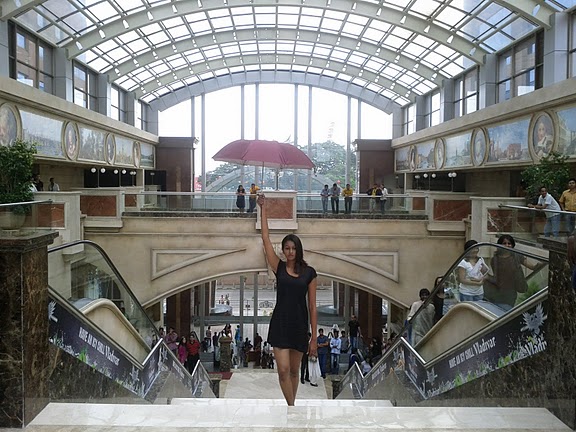Continued from Dancing for Pleasure – Part I

Interacting with other dancers
My three months in the summer improvisation workshop in Amsterdam was mind-boggling. We worked intensively on improvisation – to move as we pleased, to allow the movement to emerge without judgment or guidance. This kind of practice involves observing one’s movement patterns; bringing to surface one’s unconscious ways of moving, and therefore creating space for newer choices. It was a new way of looking at movement, at life!
My next two years were spent on understanding the basics of the body, discovering where movement originates from, where dance begins. I realized that I was never encouraged to simply explore meaningless movement – movement for the sake of it; with no need to make it look beautiful (as opposed to the awe-inspiring geometry of classical forms), or without telling a story (“Radha and Krishna dance on Yamuna banks!”). Of course, when you watch a dance performance as an audience, you want to see beauty, you want to be engaged and entertained; you want to understand what’s going on. But as a practice, how can I create dance that is coming honestly from me, as opposed to wearing a well-practised smile that has lost its real intention long ago?

Dancing for H2Zero show in UB City, Bangalore
I collaborated with other dance companies in Bangalore; I worked with dancers and choreographers from all over India and the west, persistently looking for a definition that would consists of everything that I was seeking in Indian contemporary dance. In this search, I explored various ways of moving (sometimes not moving at all!), many times challenging the audience’ perception and my own. I have been asked many times “Why are you doing this?” or “Why can’t you do the good-old Bharatanatyam? Everyone likes it; you are even good at it!” (That was my mother, of course). I must confess that it was hard to face such questions and still continue with my research. …To go on without an apparent reason, but being driven just by a strong drive from the inside.
Fortunately, I have been lucky enough in my performing career to experience audiences that were open-minded. There were many times when they were willing to be touched, to be moved; when they were empathetic to honest expressions. For poetry, they were willing to let go of logic. I do not mean to say that classical Indian dance has no poetry. What I mean is the grammar need not have to be that of classical dance in order to be appreciated. This was a wonderful encouragement for me to trust that I didn’t have to explain everything even if I was working with something the audience is unfamiliar with, as long as they get the essence.
I spent my last year participating in the International Choreographers Exchange program at the Salzburg Academy of Experimental Dance (SEAD). The entire year was jam-packed with creating choreographies, and training in contemporary dance techniques under world-class teachers from across Europe. It was amazing to spend an entire year being surrounded only by dancers and choreographers of all kinds, to watch them, to learn from them and share with them my points of view.

Dancer – Nayana Bhat
SEAD is known for encouraging dancers and choreographers to develop their individual styles in dance. I, on the other hand, coming from an Indian classical dance background, am trained to follow, to learn by following and surrendering. In SEAD, I had to mix the two ways in order to function. It was a new way; I had to put in double the work than the rest.
This one year brought me many revelations regarding my transition from classical to contemporary dance. First of all that the devotion I was speaking of earlier has to be brought into the act of moving itself, especially in the absence of a deity, unlike in classical Indian dance forms that have their roots in ritualistic practices. In contemporary dance, this devotional presence has to be discovered in the simple act of moving, where the dancer treats each of her moves not as movements that she “does”, instead as though they were in her very nature of being.
As philosophical as it may sound, this immediately negates the need for the audience to have a linear narrative in order to experience the emotions that the performance evokes in them. It allows them to surrender to what the dancer is presenting, as she is surrendering herself to it. This is the way a ‘rasa’ is created in the audience, just as in classical Indian dance. I find that to be a powerful connecting point between classical Indian dance and any other performing art.
In the course of my research, I had to redefine my definitions several times of what dancing meant, what the purpose of performing art was according to me. And yet, I do not stand on a steady ground today; the definition of what art serves or means is ever-changing as it always has. I do not know if I can ever find a transition or if I will spend the rest of my life hanging in between two worlds; but I do know that this search has enriched me not only as a dancer, but also as a human being. Last but not the least, I discover time and again that no matter how contemporary I am or I become, my heart still belongs to what is classic.






Thanks for sharing your thoughts about dance. Regards